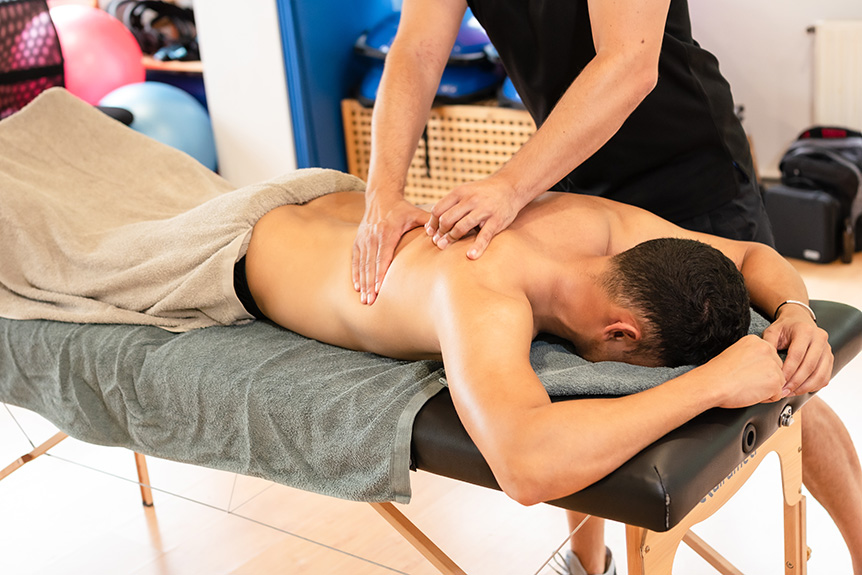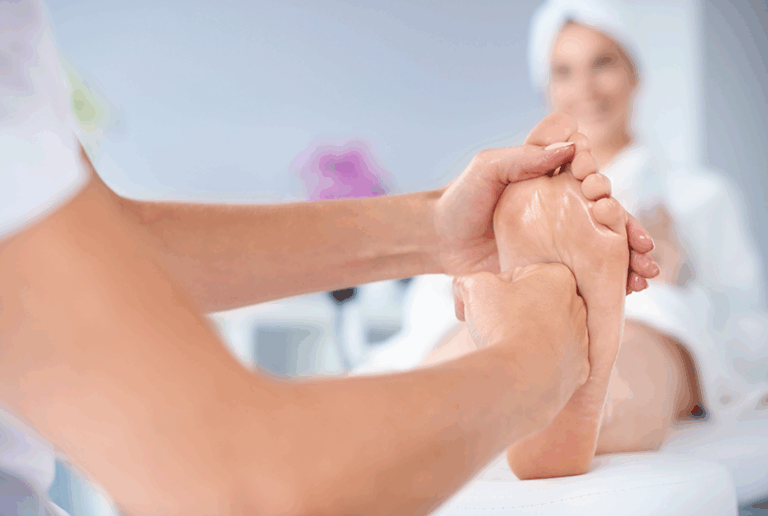Yes. This massage supports recovery by improving microcirculation and fluid exchange, easing fascial stiffness, and reducing nociceptive drive. Assessment-led techniques (stripping, cross-fibre friction, gentle contract–relax) target overloaded muscle–tendon units to restore glide, control, and proprioception. Evidence shows reduced DOMS, creatine kinase, inflammatory markers, and perceived fatigue, with athletes reporting warmer limbs and easier breathing. Timing matters: light pre-event, gentle-to-moderate post-event, and structured sessions between training. Safety screening guides modifications. Practical steps, techniques, and timing recommendations follow.
What Athletic Massage Is and How It Differs From Other Modalities
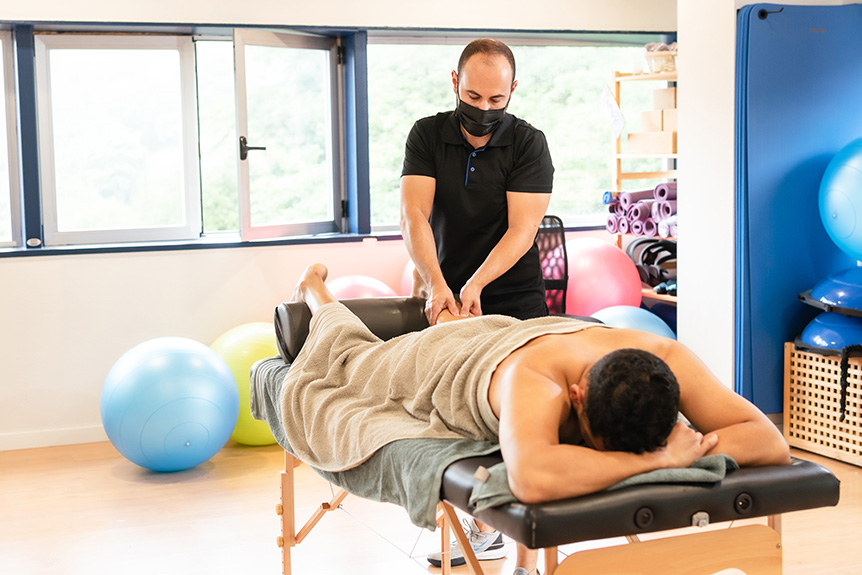
What distinguishes performance therapy massage from other modalities is its biomechanical focus on tissue function and performance. It targets specific muscle-tendon units, fascial lines, and joint interfaces using assessment-led touch—palpation, range-of-motion testing, and movement screens—to guide pressure, angle, and tempo. Techniques such as longitudinal stripping, cross-fiber friction, and contract-relax are applied where load tolerance, neuromuscular coordination, or glide is limited.
Unlike general relaxation styles, performance therapy massage in Spa & Massage clinics is session-planned around a client’s sport, training phase, and current tissue status. Therapists prioritize measurable outcomes: improved end-range control, reduced perceived stiffness, clearer proprioception, and cleaner joint tracking.
Oils are kept light for grip and precision. Each intervention is purpose-driven—preparing tissues before efforts, refining mechanics between events, and reinforcing efficient movement patterns without overloading sensitive structures. Like sports massage, the healing power of reflexology is another therapy that emphasizes targeted touch to promote recovery and enhanced physical well-being.
How Performance Therapy Supports Muscle Recovery After Training
Following intense training, targeted performance therapy massage enhances microcirculation, increasing oxygen delivery and metabolite clearance in working tissues.
By addressing fascial stiffness and trigger points, it reduces nociceptive input and lowers post-exercise muscle tension and soreness.
At Spa & Massage in London, therapists apply graded pressure and mobility techniques to speed recovery timelines and support a faster return to quality training.
Improved Circulation and Oxygen
How exactly does enhanced circulation accelerate post-training recovery? By increasing perfusion, muscles receive more oxygen and glucose while metabolic by-products are cleared faster. In performance therapy massage, rhythmic effleurage and targeted petrissage create a pressure–shear stimulus that dilates arterioles, boosts venous return, and optimises capillary exchange. The result is a steadier oxygen gradient into working fibres and more efficient lactate and carbon dioxide removal.
From Spa & Massage’s perspective, therapists modulate stroke depth and tempo to influence hemodynamics without provoking undue sympathetic arousal. Gentle, sustained compressions near major venous pathways, followed by distal-to-proximal strokes, enhance preload and lymphatic flow, supporting tissue hydration.
Clients often notice warmer limbs and steadier breathing—signs of improved delivery. This circulation-first approach lays the groundwork for faster energy restoration and reliable training continuity.
Reduced Soreness and Tension
Post-training soreness and tension decrease when mechanical load on sensitised tissues is reduced, nociceptive input is moderated, and muscle tone normalises. Performance therapy massage achieves this through graded pressure, shear, and stretch that downregulate protective co-contraction while improving glide between fascia and muscle.
By targeting trigger points and taut bands, therapists lower spontaneous motor end-plate activity, easing local ischemia and guarding. Gentle, sustained compression and slow effleurage stimulate A-beta afferents, inhibiting pain signalling and inviting the nervous system to soften.
At Spa & Massage in London, therapists apply dose-controlled techniques—deep tissue for densified regions, myofascial release for restricted planes, and muscle energy to reset length-tension relationships. Clients are guided to breathe, rehydrate, and perform light mobility after sessions, consolidating relief and helping next-day movement feel supple, confident, and ready.
Evidence on Reducing Soreness, Inflammation, and Fatigue
Why does targeted manual therapy reduce muscle soreness, inflammation, and fatigue? Evidence points to mechanical and neurophysiological pathways.
Slow, graded pressure enhances fluid exchange, clearing metabolites while improving capillary perfusion in loaded tissues. Shear and longitudinal strokes modulate fascial stiffness, reducing nociceptor firing and perceived soreness.
Studies show modest but meaningful reductions in DOMS, creatine kinase, and perceived fatigue when massage follows strenuous effort. Anti-inflammatory effects appear via downregulation of NF-κB and upregulation of mitochondrial biogenesis markers, aiding cellular repair.
At Spa & Massage clinics in London, therapists apply sports-specific sequences—decompression, cross-fibre friction, and guided eccentric lengthening—tailored to the athlete’s tissue quality.
Clients report faster return to baseline strength and less heaviness. Pressure, tempo, and stroke direction are dosed to objective findings, prioritising comfort and measurable recovery.
Timing Your Massage: Pre-Event, Post-Event, and Between Sessions
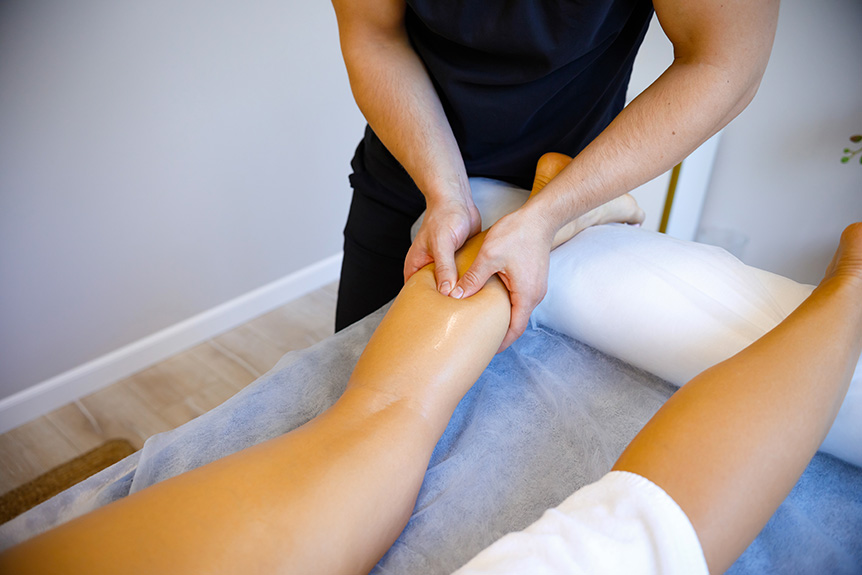
Effective timing determines whether performance therapy massage primes performance, accelerates recovery, or supports adaptation. Evidence suggests pre-event work should be brief and specific: 10–20 minutes focusing on dynamic tissue preparation, neuromuscular readiness, and joint range—without deep pressure that could dampen force output.
Post-event timing targets clearance and downregulation: within 1–2 hours, gentle to moderate pressure supports fluid exchange, reduces perceived soreness, and restores parasympathetic tone.
Between sessions, cadence governs adaptation. For strength or speed blocks, 24–48 hours after heavy training allows tissue remodeling without blunting stimulus; for high-volume endurance, weekly or twice-weekly sessions manage cumulative stiffness.
At Spa & Massage in London, therapists schedule to match training cycles, apply load-aware pressure, and coordinate with rest, hydration, and mobility prescriptions to convert effort into dependable performance.
Techniques Our Therapists Use for Recovery-Focused Sessions
Although recovery goals vary by sport and training load, Spa & Massage therapists prioritise techniques that optimise fluid dynamics, neuromuscular tone, and tissue extensibility without provoking additional stress.
In practice, this means rhythmical effleurage to enhance venous and lymphatic return, followed by slow myofascial glides to reduce passive stiffness.
Targeted stripping is applied along muscle fibre orientation to address residual trigger points, while gentle contract–relax (PNF-style) holds restore length–tension balance without overreaching fatigued tissue.
Joint oscillations and grade I–II mobilisations encourage synovial nourishment and reduce guarding.
Cross-fibre friction is used sparingly to stimulate remodelling where micro-adhesions limit glide.
In our London clinics, neutral, hypoallergenic oils support controlled drag.
Sessions end with diaphragmatic breathing cues and guided downregulation to normalise autonomic tone and accelerate readiness.
Customising Pressure and Focus Areas for Different Sports
At Spa & Massage, sport-specific pressure mapping is used to align force application with tissue tolerance, for example increasing shear-compression over the posterior chain for runners while moderating pressure around the patellofemoral complex.
Targeted muscle prioritisation then directs time to the primary load-bearers—such as calves and hip stabilisers for runners, rotator cuff and scapular retractors for swimmers, or forearm flexor–extensor groups for racquet athletes.
This biomechanics-led customisation aims to reduce DOMS, restore range of motion, and shorten time-to-readiness for the next training session.
Sport-Specific Pressure Mapping
Sport-specific pressure mapping tailors massage pressure, stroke direction, and focal regions to the biomechanical demands of each sport, aiming to normalise tissue tone, restore fascial glide, and optimise neuromuscular function.
At Spa & Massage clinics in London, therapists assess sport mechanics, recent training load, and palpatory findings to calibrate force and vector.
For runners, longitudinal strokes along calf and hamstring fascial lines modulate Achilles–posterior chain stiffness without provoking protective guarding.
For rowers, graded cross-fibre pressure to thoracolumbar fascia and forearm flexors targets load-sharing tissues that fatigue early.
Cyclists benefit from controlled compressions to vastus lateralis and hip flexors to influence patellofemoral tracking and hip extension symmetry.
Pressure is titrated with breath-led feedback, and outcomes are tracked through range-of-motion change, pain pressure thresholds, and session-to-session recovery markers.
Targeted Muscle Prioritisation
Why prioritise certain muscles over others during recovery work? Because different sports load tissues uniquely. Runners accumulate tensile stress in calf–Achilles complexes, hip stabilisers, and hamstrings; cyclists compress quads and hip flexors; swimmers overuse lats, rotator cuff, and cervical extensors.
Prioritisation improves outcomes by directing pressure, shear, and stretch where the greatest mechanical fatigue and adhesion risk exist.
At Spa & Massage, therapists begin with movement history and palpation to identify tone asymmetries and trigger bands, then dose pressure accordingly: slower, deeper strokes for fascial densification; shorter cross-fibre passes at tendon junctions; gentle neuromodulatory holds near irritable nerves.
They sequence proximal-to-distal to restore glide, then integrate antagonist release for balance. The aim is measurable change—longer stride, smoother shoulder elevation, reduced post-session stiffness—within a calm, attentive setting.
When to Avoid Performance Therapy and Safety Considerations
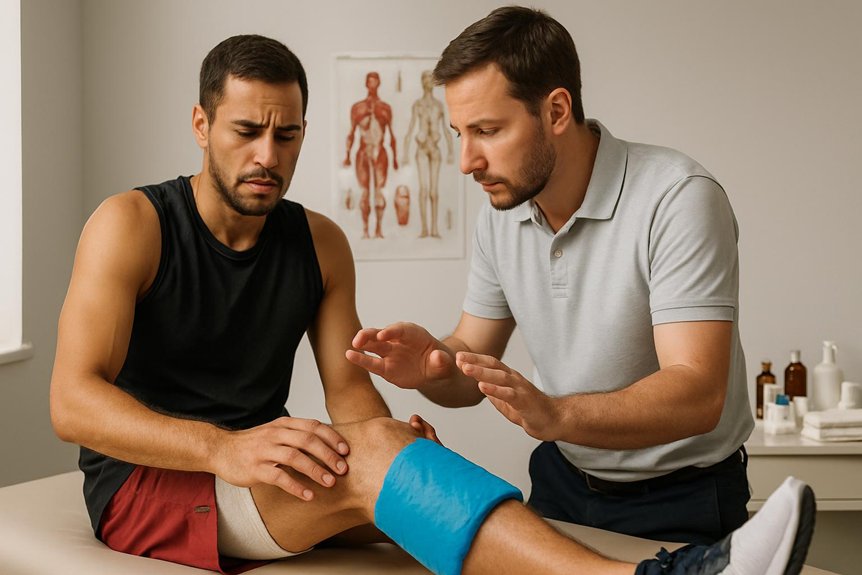
Although performance therapy massage supports recovery and performance, there are clear situations when it should be deferred for safety.
Acute injuries—suspected tears, fractures, or joint sprains—benefit from rest, compression, and medical assessment before any manual load.
Red flags include fever, systemic infection, open wounds, uncontrolled hypertension, deep vein thrombosis risk (calf pain, swelling, warmth), and new numbness or progressive weakness.
Post-surgery, recent injections, or active inflammation demand medical clearance.
From Spa & Massage’s clinical perspective, biomechanics drives decisions: if tissue is structurally compromised, pressure may increase bleeding, edema, or disrupt healing collagen alignment.
Therapists avoid direct work on bruising, varicosities, or bony prominence pain, and modify for pregnancy or osteoporosis.
Clients should disclose medications (anticoagulants, steroids) and neurological conditions.
Safety preserves outcomes; timing and precision protect future performance.
What to Expect at Your Appointment and Aftercare Tips
Safety parameters set the stage for effective care, so the appointment begins with a focused intake to confirm goals, screen for contraindications, and map pain and load patterns.
At Spa & Massage, therapists observe posture, joint range, and tissue tone, then apply targeted techniques—stripping, pin-and-stretch, friction, and contract–relax—to modulate nociception, improve fascial glide, and restore force transmission.
Pressure is adjusted to the client’s breath and feedback; neutral, hypoallergenic oils are used to reduce shear without dulling proprioception.
Aftercare prioritises dose-response. Our therapists recommend: gentle mobility within pain-free ranges, two to three short walks to enhance perfusion, and two litres of water over the day.
Expect transient soreness up to 48 hours; use heat for stiffness, ice for acute flare. Avoid maximal loading for 24–48 hours. Report red flags promptly.
Building a Recovery Routine With Performance Therapy and Self-Care
Two pillars shape an effective recovery routine: structured performance therapy massage at appropriate intervals and simple, load-sensitive self-care between sessions.
Spa & Massage advises cadence based on training strain: weekly during heavy blocks, fortnightly for maintenance, tapering to monthly in off-season. Sessions target tissue stiffness, fascial glide, and neuromuscular tone to restore range without provoking irritability.
Between appointments, progress is guided by symptoms and workload. Gentle mobility, diaphragmatic breathing, and light eccentric drills maintain tendon capacity. Clients track DOMS, morning stiffness, and perceived exertion; if markers spike, volume and intensity are trimmed 10–20%.
Hydration, protein timing, and sleep regularity support collagen turnover. In our clinics, therapists teach self-release with a ball, not to chase pain, but to modulate it—keeping tissue compliant, joints centred, and performance intact.
Conclusion
In sum, performance therapy massage can support recovery when applied with purpose: targeted pressure to modulate tone, paced strokes to aid circulation, and assisted stretching to restore range. The evidence shows small-to-moderate benefits—less soreness, modest inflammation reduction, improved readiness. Timing matters, techniques matter, communication matters. Paired with sleep, hydration, nutrition, and graded training, it complements—not replaces—load management. For athletes and active individuals, the goal is consistent: move better, recover faster, perform stronger, with safety screened and outcomes tracked.
